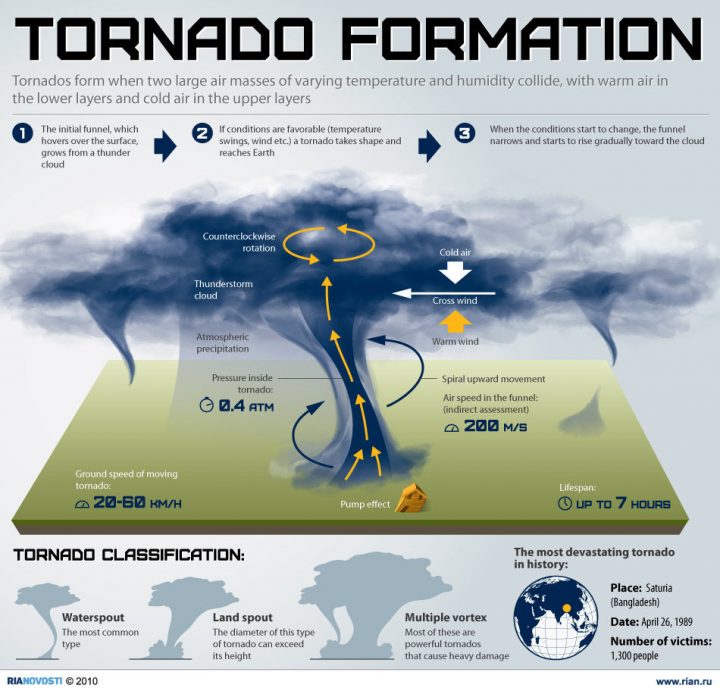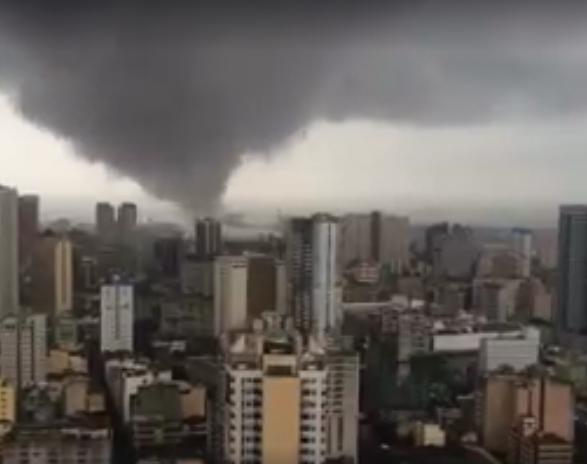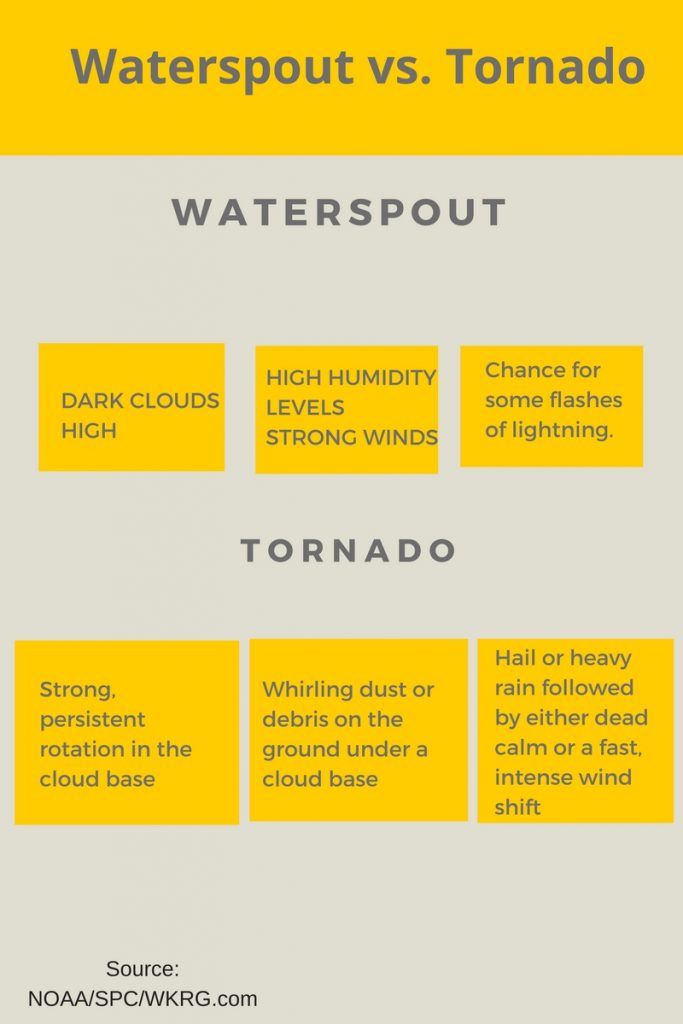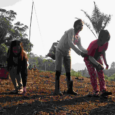“Mum, is Superman going to help us when a tornado hits Manila again?” That was the question of my 7-year old son, who is obsessed with superheroes and anything about seismology, technology, and astrology.
I paused for a moment and replied: “No. But, we might be able to save ourselves if we knew what to do should that happen again.” Honestly, I was thinking, “shucks, oo nga, what are we going to do?”
In line with Wikipedia, the first recorded occurrence was June 13, 1968, in Macabebe, Macasantol Pampanga, where it had 12 fatalities. Then it happened again last June 29, 2013, when super typhoon Rumbia or Gorio landed in the Philippines and destroyed 41 houses in Quezon City.
The most recent occurrence was last August 14, 2016, when it reportedly went in the direction of Intramuros, Bulacan, Quezon City, and other parts of Manila.
In case you missed it, watch it here.
What is the difference between tornadoes and waterspouts?
Credit: www.rian.ru
When the viral videos came out, a few Netizens were quick to point out that it was a waterspout and NOT a tornado. But, what is the difference between the two?
As stated by the National Ocean Service, a waterspout is a whirling column of air and water mist. As seen on their website, they are also characterized as “tornadic waterspouts” which are similar to tornadoes that form over water, or move from land to water. Generally, they have the same characteristics of a land tornado and are associated with severe thunderstorms, and are often accompanied by high wind and seas, large hail, and frequent dangerous lightning.
Although waterspout happens when we encounter warm air temperatures and high humidity levels, the rains were on and off that day. Hence, the tornado that damaged 300 houses, Philippine Star reported.
Furthermore, NOAA or National Oceanic and Atmospheric Administration, a US-based website, confirmed that the best way to avoid a waterspout is to move away (or 90-degree angle) from its apparent movement and NEVER look closer to investigate as it may be as dangerous as tornadoes.
In a succinct manner, a waterspout is a weaker version of a tornado.
So, how do we save ourselves?
Consequently, since it seldom happens, we are often caught off guard. Just like the rare occurrence that happened last week, no one knew what to do. In the viral video shared by several netizens, it seemed like people were trying to save whatever they could or still watching where it’s heading.
This video was originally posted by Make Brgy 402 Facebook page with a caption: Aug. 15, 2016 – Video footage of Buhawi or “waterspout” near BPI Bustillos branch.
For the benefit of everyone, I have researched and asked a few people whose primary job is to rescue emergencies.
Here are a few basic safety steps that may come in handy:
Step 1. Familiarize yourself with the signs of tornadoes/waterspouts
Even though tornadoes are unlikely to occur again, it’s still best to keep yourself updated and aware about tornadoes or waterspouts.
Step 2. Secure a safe place to hide
Since most houses and infrastructure in the Philippines don’t have an underground, a cement structure such as buildings are sufficient. Here are some frequent scenarios that are most likely to happen, according to Storm Prediction Center:
- If you are at home with no underground or basement, stay away from windows and stay inside a small-spaced room like the bathroom.
- If you have stairs, hide yourself and your family under a stairwell.
- If you can, cover yourself with comforters or blankets that will shield you from falling debris or hard objects.
- If you are at school, again, avoid windows and large-spaced areas such as gymnasium or auditoriums.
- If you are driving and stuck in traffic, bear in mind that it’s risky to manage such scenario. So, it’s important to stay calm and look for malls or buildings near you. LEAVE the car if need be.
- If you have pets, take them with you wherever you go.
Step 3. Keep updated with the latest news
Always make it a habit of updating yourself with the latest updates of your community. Watch the news as much as possible. Check the DOST-PagAsa Facebook page, MMDA’s Twitter, from time to time. You may also get in touch with Red Cross for further information on rescue options or medical assistance.
Step 4. Know and prepare for recovery options
“After the tornado check for injuries. Render first aid if you are capable and equipped. Call 911 for further assistance,” says Ruel Kapunan with 5 years experience in Disaster Response/Management. To add, if you are not at home, wait for the sign or authorities’ go signal before doing so. Gather your family and ensure that your emergency kit is ready and within reach.
Step 5. Listen to your community leaders
Always follow your local leaders’ request: if they ask you to evacuate the area, please listen and do so.
Even though our weather service bureau Philippine Atmospheric Geophysical and Astronomical Services Administration (PAGASA) isn’t as equipped in giving data about tornadoes, as yet, still it is vital to acknowledge their updates, warnings, reports, and safety procedures at any given time.
Did I miss anything? Share your tips with us by leaving a comment below.








